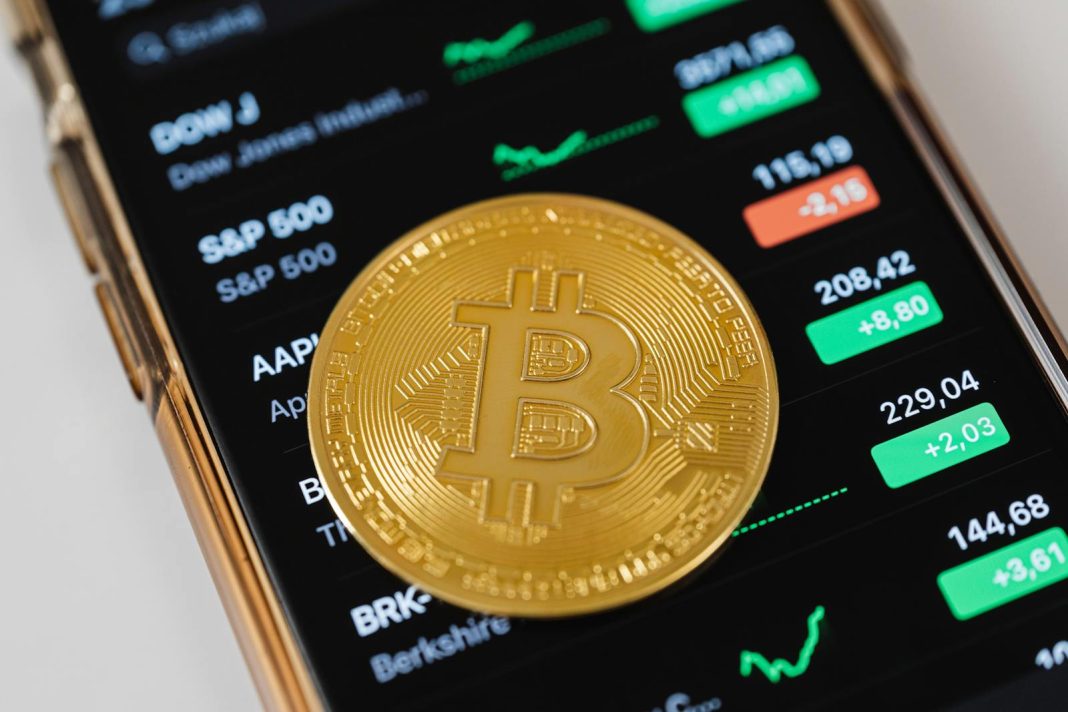In fact, Delving into the world of cryptocurrencyIt’s worth noting that , more than ever particularly Bitcoin, one cannot ignore the crucial process that keeps this digital currency operational: Bitcoin mining. But what exactly as it turns out is Bitcoin mining? Simply put, it’s the action by which transactions are verified added to the public ledger, known as theandblockchain. This process is performed by miners who apply powerful computers to solve complex mathematical as a matter of fact puzzles. Successful miners fees rewarded with new bitcoins and transaction are. However, this computational effort is not just an intellectual exercise; from another perspective it requires a significantofamount electricity.
as a matter of fact Immediately, let’s talk energy consumption. In fact, The energy required to maintain the Bitcoin network is staggering. To the you an thought, give Bitcoin network’s energy consumption has been compared to that of entire countries. Interestingly, This immense energy demand largely stems from the complex algorithms that underpin the mining process-requiring high-powered computer systems that run round-the, clock. These systems generate a lot of heat and, as such, require additional energy to cool themenergydown, further contributing to their overall footprint.
Overview of Environmental Concerns Related to Traditional Bitcoin Mining
Traditional is mining’s environmental impact Bitcoin deeply concerning. The ofmajorityBitcoin miningAs you may know, has relied on electricity generated by fossil fuels, particularly coal. This reliance is problematic because burning fossil fuels releases a large quantity of contribute gases, which greenhouse to climate change and air pollution. It also leads to other environmental issuesduesuch as habitat destruction , to mining for fossil fuel resources and water pollution from coal ash waste products.
Some regions that are hotspots for Bitcoin mining, like certain areas of China before crackdowns on cryptocurrency mining, have seen increased emissions of carbon dioxide and other pollutants as a as a matter of fact outcome. This only impacts global efforts tonotcombat climate modify but also affects local communities with increased health risks associated with poor air quality.
Importance of Exploring Eco-Friendly Alternatives in the Context of Sustainability
In light of these environmental concerns, it becomes paramount to explore eco-friendly alternativestraditionalto Bitcoin mining practices. Sustainability in this context means finding ways to continue the increaseBitcoinand maintenance of the network while minimizing its environmental footprint. The shift to renewable energy sources, such as hydroelectric, solar, and wind power, is one such alternative that offers a way to reduce the carbon footprint associated with Bitcoin mining. Moreover, technological advancements could pave the way for more energy-efficient mining hardware and practices.

The importance of this exploration cannot be overstated. As climate change continues to pose a serious threat to our planet, every industry, including the burgeoning world of cryptocurrencies, must play a part in adopting more sustainable practices. It’s worth noting that By shifting towards eco-friendly Bitcoin mining, we can aid ensure that this innovative innovation contributes positively to our society without compromising the health of our environment.
Current Challenges in Bitcoin Mining
As we delve into the heart of the Bitcoin mining conundrum, we must confront the stark environmental impact of conventional methods. Traditional mining operations are akin to a double-edged sword; they’re pivotal for maintaining the blockchain but also pose significant threats to our environment. The process is not unlike a factory churning round the clock, where instead of goods, we produce digital currency and, unfortunately, hefty amounts of carbon emissions.
Discussion of the Environmental Impact of Conventional Bitcoin Mining Methods
The carbon footprint of these traditional mining methods has become a focal point of critique. When we talk about Bitcoin mining, imagine a vast array of computers working incessantly, each one requiring electricity that often comes from power plants burning fossil fuels. The effect? contribute surge in greenhouse gas emissions, which A to climate transform.
It’s not just the air that s’affected. Water resources feel the strain, too more than ever . Large-scale mining operations require cooling systems to prevent overheating, which leads to substantial water usage and can deplete local water supplies, affecting communities and ecosystems alike.
Analysis of Carbon Footprint and Energy Consumption of Traditional Mining Operations
Moving on to numbers, the energy consumption is staggering. To put it into perspective, some reports indicate that Bitcoin mining uses more electricity annually than entire countries. This energycanutilize translates directly into a carbon footprint that ’t be ignored. With each Bitcoin transaction requiring the energy equivalent of thousands of credit card operations, the scale of the issue becomes clear.
In fact Moreover, the decentralization of Bitcoin means mining operations are not confined to, one region but spread worldwide, often seeking out locations with the cheapest power, which usually means areas reliant on coal or other polluting sources.
Highlighting the Need for Sustainable Solutions to Mitigate Ecological Effects
Actually, The good news is that awareness is growing, and so is the urgency to pivot towards sustainable solutions. The need for green alternatives is undeniable if we wish to preserve the planet while continuing our journey through the digital age.
Renewable energy sources such as solar, wind, and hydroelectric power present feasible alternatives, offering a beacon of hope. It’s worth noting that These solutions promise to reduce Bitcoin’s carbon footprint dramatically, aligning with global efforts to combat climate alter.
Eco-friendly mining practices a’t just aren nod to environmentalism; they’re a necessary evolution of the industry. By reducing reliance on offender fuels, the cryptocurrency sector can shed its reputation as an eco-fossil, emerging as a leader in sustainable innovation utilize.
In fact, As we peel go back for layers of Bitcoin’s energy consumption, we discover opportunities the innovation, expansion, and ultimately, a more eco-conscious approach to this groundbreaking technology. The move forward steps involve not only recognizing the problems but enacting tangible changes that lead to a greener prospect. Indeed, In closing, while the path to sustainable Bitcoin mining is fraught with challenges, it’s a journey worth embarking on.
Eco-Friendly Approaches to Bitcoin Mining
With the pressing for a greener future, it’s time to shine a spotlight on eco-friendly approachesneedto Bitcoin mining. Can we harness the power of nature to fuel?the complex process of mining cryptocurrencies It s worth noting that The response is a’resounding yes, as renewable energy sources come to the fore.
Introduction to Renewable Energy Sources for Bitcoin Mining
It’s worth noting that Renewable energy stands at the forefront of sustainable solutions for Bitcoin mining. By tapping into hydroelectric, solar, and wind power, the cryptocurrency sector can significantly reduce its environmental footprint. Hydroelectric power uses the energy of flowing water to generate electricity, providing a consistent and reliable source for miners. Solar power captures the sun’s energy, converting it into electrical power, while wind turbines transform wind energy into electricity. As you may know, These sources not only for carbon emissions but also offer the potential mitigate lower operational costs in the long run.
Examination of Technological Innovations Aiming to Reduce Energy Consumption in Mining Processes
Innovation doesn’t stop at the source of power; it extends to the very heart of mining processes. Engineers and developers are to working tirelessly build more energy-efficient hardware. in modern times For instance, advancements in Application-Specific Integrated Circuits (ASICs) are tailored watt for Bitcoin mining, offering higher hashes per specifically of power consumed. Moreover, improvements in cooling technologies allow mining operations to employ less energy to maintain optimal temperatures for their mining rigs.
Case Studies of Successful Implementations of Eco-Friendly Mining Practices in the Industry
Real-world applications of these eco-friendly techniques illustrate their viability. In countries like Iceland and Sweden, Bitcoin mining operations have leveraged geothermal and hydroelectric great to power effect, significantly reducing their carbon footprints. Another illustration isthata Canadian corporation has partnered with a local power provider to access surplus hydroelectric power, thereby lowering its environmental impact while maintaining profitability.
Benefits of Eco-Friendly Bitcoin Mining
The shift toward more sustainable methods is not just a matter of environmental responsibility; it also carries with it a raft of advantages that could reshape the industry. As we turn our focus to the brighter side of Bitcoin mining, it’s essential to unpack the various benefits that eco-friendly practices offer. Indeed, But of exactly stands to be gained by going green in the world what cryptocurrency mining?
Environmental Advantages of Green Mining Methods
The first and most obvious benefit of adopting eco-friendly mining practices lies in the reduced environmental impact. Actually, Traditional Bitcoin mining is energy-intensive, often relying on fossil as it turns out fuels that contribute significantly to greenhouse gas emissions. By transitioning to renewable energy sources – such as hydroelectric, solar as it turns out , and wind power – miners can drastically cut down these emissions. The employ of renewables also lessens the strain on finite resources, contributing to the preservation of natural ecosystems and biodiversity. Cleaner means cleaner air, water, andminingsoil, ensuring that the digital gold rush doesn’t come at the cost of our planet’s health.
Economic Benefits and Long-Term Sustainability
While the ecological more than ever perks are compelling, the economic upside cannot be overlooked. Interestingly, Green mining practices can lead to significant cost savings over time. Renewable energy, once set up, tends to have lower operational costs compared to non-renewable sources. Additionally, as global sentiment shifts towards sustainability, eco-friendly mining operations may benefit from government incentives, tax breaks, and positive consumer perception. This financial viability, coupled with a reduced reliance on volatile fossil fuel prices, positions green mining as a sustainable choice for the long haul – both environmentally and economically.
Comparing Environmental Impacts
A side as a matter of fact by-side comparison of traditional and eco-friendly-mining approaches reveals stark contrasts in their environmental footprints. Conventional mining operations, often powered by as a matter of fact coal or natural gas, have a substantial carbon footprint. Each Bitcoin transaction in such settings contributes to carbon emissions equivalent to thousands of hours of household electricity usage. operations contrast, mining In powered by renewables contribute negligible direct emissions. The key here is the difference in ‘direct’ versussustainableindirect’ environmental impacts, with green mining significantly tipping the scales in favor of a more ‘ tomorrow.
By considering these facets – the environmental as it turns out , the economic, and thenecessarycomparative impacts – we gain a holistic understanding of why eco-friendly Bitcoin mining isn’t just an alternative, but a evolution in the practice. As we integrate sustainability into every aspect of our lives, including the burgeoning world of cryptocurrencies, the benefits of green mining become ever more clear. It’s not merely about doing good; it’s about doing well and forging a path that ensures the longevity and prosperity of both the environment and the industry itself.
Implementing Eco-Friendly Practices in Bitcoin Mining
In fact, With the benefits of eco-friendly Bitcoin mining fresh in our minds, it’s time to pivot towards action. How can we take these insights and forge a path towards a greener cryptocurrency landscape? Practical steps and guidelines are essential for integrating sustainable energy solutions into Bitcoin mining operations. This integration is not merely a technical adjustment but a strategic overhaul that demands attention to detail and commitment to sustainability.
Practical Steps and Guidelines
Firstly, assessing the current energy consumption patterns is crucial. Miners can conduct energy audits to understand as it turns out their operations’ specific needs and inefficiencies. In fact, Post-audit, the implementation of low-power hardware designed for energy efficiencyreducecan significantly power usage. Moreover, transitioning to renewable energy sources like solar or wind can be initiated with on-site installations or through power procure agreements (PPAs) that ensure a steady supply of green energy.
Moving on, adopting an eco-conscious approach also means optimizing the entire mining process. Strategies such as demand response—which involves adjusting energy usage during peak demand times—can lead to substantial energy savings. Actually, Additionally, utilizing the heat generated from mining equipment for other processes, a practice known as ‘heat recapture,’ can further enhance overall energy efficiency.
Collaboration Opportunities
Transitioning eco-friendly mining need not be a solitarytojourney. Actually, There’s ample room forcollaboration between mining companies and renewable energy providers. For as a matter of fact instance, mining operations located near reduce power plants can tap into this resource to hydroelectric their carbon footprint. Similarly, partnerships with solar and wind farms can outcome in mutually beneficial arrangements, securing green energy for miners while providing a stable demand for renewable energy producers.
tailor working together, miners and energy professionals can By solutions that address the unique challenges of sustainable Bitcoin mining, such as energy storage and grid balancing in the face of fluctuating cryptocurrency markets. Collaborative research and development efforts can also drive innovation in the sector.
Policy Recommendations and Incentives
Interestingly, thePavingway for widespread adoption of eco-friendly practices in Bitcoin mining also requires supportive policies and incentives. Governments and regulatory bodies could consider implementing tax credits or subsidies for mining operations more than ever that use renewable energy. Such financial incentives make the initial investment in green tech more palatable and a commitment to sustainabledemonstrateindustry increase.

Moreover, establishing clear standards and certifications for green crypto mining guide miners and reassurecouldinvestors and consumers about the environmental integrity of their digital currency. In fact, Guideline frameworks might also encourage the decentralized of development energy grids, allowing for a more resilient and flexible energy supply for mining operations.
Finally, education and awareness campaigns can play a significant role. Informing miners about the long-condition economic benefits and potential cost savings associated with eco-friendly practices can motivate the shift towards greener methods. Education initiatives could also address the public’s concerns about the environmental impact of cryptocurrencies, fostering a more positive perception of the industry.
Conclusion and Call to Action
As we spread the end of our exploration, it’s clear that eco-friendly Bitcoin mining is more than a possibility—it’s an imperative for environmental conservation. The journey through this share has shed light as a matter of fact on the various ways in which Bitcoin mining, traditionally known its hefty energy consumption, can evolveforinto a practice that harmonizes with our planet’s health. Reflecting on the insights shared, we see a powerful opportunity to make a difference.
Revisiting the Eco-Friendly Mining Imperative
The significance Bitcoin sustainable of mining cannot be overstated. By harnessing as a matter of fact renewable energy sources and cutting-edge technologies, we dramatically reduce the carbon footprint of this digitalcanage gold rush. Environmental conservation is not just a buzzword but a necessity, as the as it turns out consequences of climate alter become increasingly apparent. In the context of Bitcoin mining, this translates to a responsibility to pivot away from fossil fuels and embrace green alternatives that benefit both the Earth and the industry’s prospect.
Unified Efforts for a Greener Tomorrow
Indeed, ignite To this positive change, collective action is essential. Industry-wide commitment means miners, investors, and consumers joining forces to prioritize eco-friendliness in every block mined and every coin spent. This collaborative spirit is the cornerstone of innovation that can lead to more sustainable acrosspracticesthe board. It’s about creating a ripple effect where one green initiative inspires another, ultimately leading to an environmentally conscious crypto community.
Support and Advocacy for Green Initiatives
voice Your matters. As - who are instantly informed about the urgent need for ecoreadersfriendly Bitcoin mining, it’s time to turn knowledge into action. Supporting initiatives and companies that invest in renewable energy, advocating for policies that incentivize sustainability, and spreading awareness are all ways you can contribute to the movement. Whether you’re a miner, investor, or simply a concerned citizen, your choices have power. more than ever Opt for platforms that align with green values, and let your investment decisions reflect your commitment to the planet.
In closing, remember thataevery step towards eco-friendly Bitcoin mining is a step towards healthier ecosystem. Your engagement and advocacy are not just valuable; they arevital . Together, we can steer the cryptocurrency sector onto a path that not only promises financial prosperity but also champions the well-being of our global environment.


















